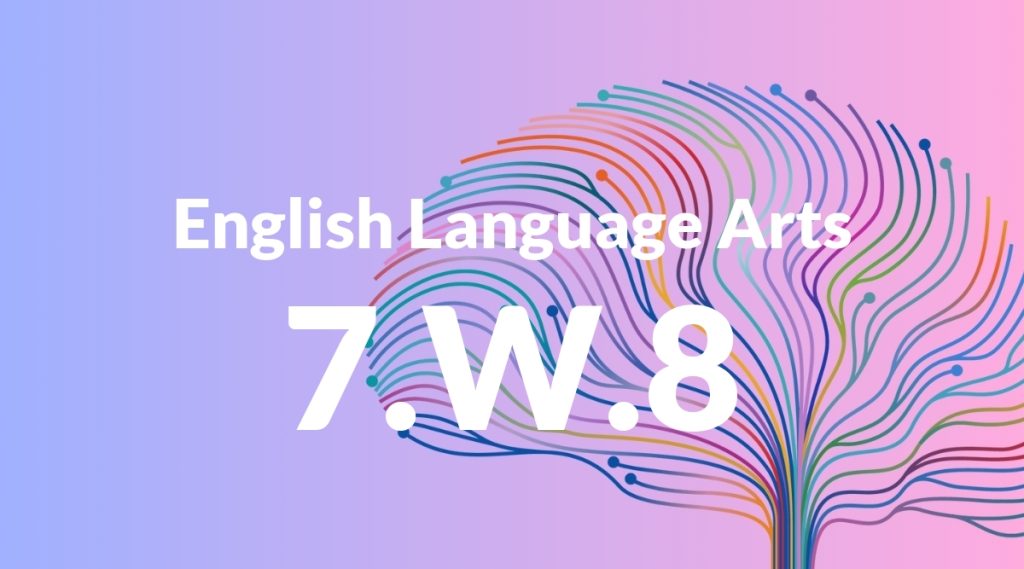Standard: 7.W.8 – Gather relevant information from multiple print and digital sources, using search terms effectively; assess the credibility and accuracy of each source; and quote or paraphrase the data and conclusions of others while avoiding plagiarism and following a standard format for citation.
Grade level: Grade 7
Subject: English Language Arts
Domain: Writing
Teacher Overview
This standard focuses on developing students’ research skills, including gathering information from various sources, evaluating the credibility of those sources, and correctly citing them to avoid plagiarism. These skills are crucial for academic success and responsible information usage. Students should have basic search skills, understand different types of sources, and know the importance of avoiding plagiarism by citing sources.
Mastering this standard will prepare students for more advanced research projects and writing assignments, where they will need to critically evaluate sources and use proper citation methods.
Common Misconception 1
Some students may believe that all information found online is credible. This misconception can lead to the use of unreliable or biased sources in their work.
Intervention 1
To address this, teach students to evaluate the reliability of sources by considering the author’s expertise, the publication date, and the website’s domain. Encourage them to cross-reference information with other credible sources.
Common Misconception 2
Another common misconception is that paraphrasing information does not require citation. This can result in unintentional plagiarism.
Intervention 2
Clarify that paraphrased information must still be cited to credit the original author. Use examples and practice exercises to reinforce this concept.
Prerequisite Knowledge
Students should already understand how to use basic search engines, recognize primary and secondary sources, and have a basic understanding of plagiarism and citation formats.
Subsequent Knowledge
After mastering this standard, students will be able to conduct more advanced research projects, critically evaluate sources, and use proper citation methods in various types of writing, including argumentative essays and research papers.
Instructional Activities
- Conduct a mini-research project on a given topic, using both print and digital sources.
- Create a checklist for evaluating the credibility of sources.
- Practice paraphrasing information and citing it correctly.
- Develop a bibliography for a research paper.




